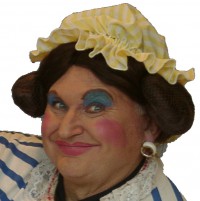This is a tip for authors. Specifically it’s for playwrights, but it might be applied (with caution) to other fields of writing.
Our editors and proof readers keep finding inconsistencies in character names. It’s not just an issue for first-time writers; we see this from experienced writers as well. There are, of course, some identifiable causes. During the writing process, names may change over time. A character may have an official name, but (legitimately) be addressed by other characters using a nickname or diminutive. A name may, in the wild, have multiple spellings; the writer may use several variations in the course of a script. Misspellings of names are not necessarily caught by a spell checker. The result is that speeches for the same character get assigned to multiple names. Whilst a decent proof reader or editor will catch most of them, they may not catch them all, and, in any case, they should not have to. It is the writer’s job to decide who they are writing about, to choose a character name, and stick to it. (It’s the writer’s choice; a writer in two minds should not force the editor to arbitrate.)
So, what can a writer do to check a finished text for name consistency?
This tip assumes that you are using Microsoft Word. (I’ve created the examples using Word 2007. Other versions of Word will behave similarly.) Other wordprocessors will do similar things, but you’ll need to find the controls for yourself. (It also assumes that you’ve written a play! If you work in another genre, you’ll need to decide how to apply this.)
Overview
What we’re going to do is to find every instance of every character name that should be in the play and we’re going to colour it red. Any name that is left (in a speech assignment or direction) that isn’t in red is likely to be a mistake of some sort (either a mistake in the character name or a character missing from the character list.)
Find and Replace Basics
Open your script in Word and go to the Characters’ page – the one with the list of character names.
Open the Find and Replace window (hereafter, with Microsoft spelling, called a Dialog). The keyboard shortcut to do this is Ctrl H. It will probably look like this.

Expand the dialog by clicking on the [More >>] button. That will get you to the options we’re going to use.
Find the Lady
In our example, we’re going to find Cinderella. So we type Cinderella into the Find box.
I’ve also checked the “Match case” box. In some cases, this may help. (Firstly it may help you identify character names with case errors. Secondly, if you have a name that is also a common word or part of a common word, it avoids most instances – for example the syllable “King” may be a character name or may be part of “thinking”.)
The Lady in Red
Now we’re going to replace Cinderella with Cinderella – but we’re going to format the text so that it appears in red.

With your cursor in the “Replace with” box, you can change the replace formatting by (obviously) clicking on the [Format] button and, from there, select “Font…”
Another dialog pops up, in which you can set the font colour. (Although of course the dialog wants you to set the font color.)
I happen to have chosen Dark Red. Chose something that stands out for you – and a colour that you haven’t used for any other purpose. (And what other purpose would you have for coloured text?)
Click [Okay] to return to the main dialog.
Click on [Replace All] and all your Cinderellas will blush dark red.
Rinse and Repeat
Follow the above steps for all the characters named in your character list.
When you’ve done that, you are ready to look at the text. What you should see, is red text at the start of every line of speech (and everywhere else a character name is mentioned). However, what you may see is something like this…

What stands out there is a different name for the same character. Correct it! Check the whole script, correcting as you go.
Clean up
Finally, when you’ve checked and corrected, go back to the Find and Replace dialog. This time in the “Find what“ box, clear all the text but set the Find [Format] to find the font colour Dark Red (or whatever you used.)
In the “Replace with” box, clear the text and set the replace font colour to “Auto” (usually another word for Black, assuming that Black is your default font colour).

[Replace All], and you will have cleaned up all the ruddy text.










